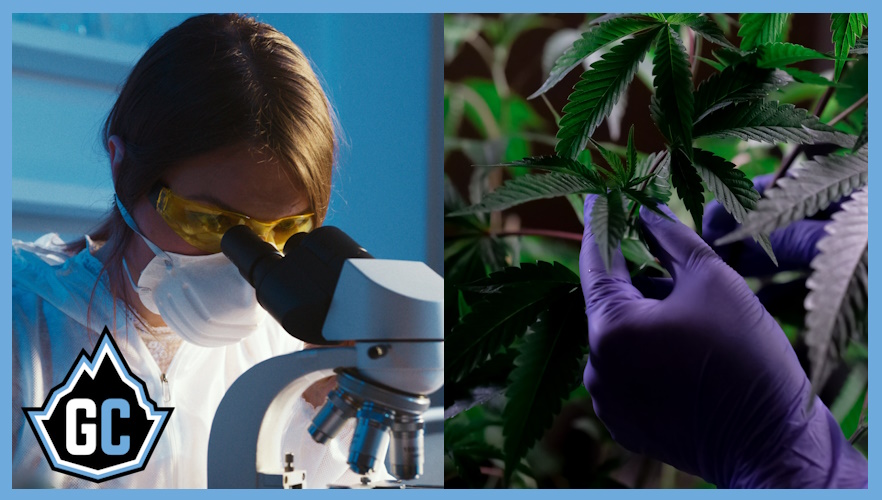HLVd: Hop Latent Viroid and Its Impact on the Cannabis Industry
- Magic Plants
- June 19, 2023
- No Comments
Title: HLVd: Hop Latent Viroid and Its Impact on the Cannabis Industry
Introduction:
The world of cannabis cultivation is thrilling, filled with fascinating intricacies, and demanding of continuous learning. Today, we delve into one of the most pressing issues facing the cannabis industry: the Hop Latent Viroid (HLVd). This tiny infectious agent, hidden from the naked eye, has made its presence felt by wreaking havoc on our cherished cannabis plants.
Sponsored Content
Understanding HLVd:
Plant pathology expert Dr. Zamir Punja PhD, Professor of Plant Biotechnology at Simon Fraser University, provided an in-depth understanding of HLVd. The viroid acts like an unseen burglar, infiltrating the plant silently and causing damage before the symptoms become visible. This infectious agent was first found in hops, a close botanical cousin of cannabis, back in the late ’80s. However, it is only recently that this sly invader has made its presence known in the cannabis cultivation sector.
In a concerning revelation, Dr. Punja’s research revealed that HLVd was present in 40% of dried flower samples collected from dispensaries, signaling its widespread prevalence. These findings illustrate the urgency of addressing this invisible adversary that can lead to symptoms ranging from stunted growth and malformed leaves to a decline in cannabinoid content, ultimately affecting the medicinal value of the crop.
HLVd Variants / Quasi-Species:
HLVd doesn’t work alone. It has the capability to spawn new versions of itself – the “quasi-species,” enabling it to adapt, multiply, and complicate the infection further. Adding to the complexity, other viroid species known to infect hops may potentially pose a risk to cannabis as well. This potential for a multi-pronged attack on the cannabis industry is a chilling thought and reinforces the need for vigilance and proactive measures.
Impact on Pesticides and Chemical Applications:
Dr. Jeffrey Raber, an eminent chemist, further expanded on the implications of HLVd. He pointed out that HLVd infection could make cannabis plants more susceptible to other diseases. As a result, growers might resort to using more pesticides, leading to increased pesticide residues on cannabis products, which in turn poses potential health risks for consumers.
Strategies Against HLVd:
Our current best defense against HLVd is meristem tissue culture, a rigorous and expensive process that can generate viroid-free plants. However, this is a temporary reprieve and doesn’t breed resistance against the viroid.
Bruce Linton’s panel discussion shed light on this aspect, discussing potential countermeasures against HLVd. From rigorous testing, eradication programs, to tissue culture and use of enzymes to destroy the viroid’s RNA, these strategies could pave the path for healthier, HLVd-free cannabis crops.
As we navigate the complexities of HLVd, it’s worth considering the variability in susceptibility among different cannabis strains. Blue Dream, a hybrid strain cherished for its balanced full-body relaxation and cerebral invigoration, stands out in this context.
The Resilience of Blue Dream:
In the face of HLVd, Blue Dream showcases notable resilience. Studies indicate that it is much less susceptible to having another infection due to HLVd. This means that while Blue Dream can still be infected by the viroid, it appears to have a lower likelihood of subsequent infections with other pathogens that often piggyback on the weakened immunity of HLVd-infected plants, such as Fusarium, Powdery Mildew, or pests.
What does this mean? For one, it suggests that some genetic factor inherent in the Blue Dream strain may offer it some protection. While HLVd can still infiltrate and affect the plant, the secondary invaders, often responsible for significant damage, find it harder to gain a foothold. This can lead to healthier plants with a lower need for pesticides, preserving both the crop’s medicinal value and its consumers’ health.
Implications and Future Directions:
This fascinating observation about Blue Dream presents promising opportunities for future research. Unraveling the genetic underpinnings of its resilience could pave the way for breeding strategies aimed at introducing this resistance into other cannabis strains. Perhaps it’s a specific terpene combination that’s particularly effective in prevention. Exciting ground to break.
Moreover, the cultivation of Blue Dream or similar crosses could serve as a viable strategy, particularly for cultivators in regions where HLVd and its associated secondary infections are prevalent. This could lead to safer, more robust cannabis crops and a significant reduction in economic losses due to HLVd.
THC content is also lower as well for some plants, as Dr. Zamir Punja says in his talk on HLVd at CannMed23, “Studies on transmission and spread of the viroid were also conducted. Five genotypes showed a reduction of 12-48% in development of inflorescences (flower buds) and a 28-39% reduction in THC production at harvest. There were significant differences in viroid infections in an additional 25 genotypes assessed, suggesting that genetic selection for resistance has potential. Affected genotypes did not show a reduction in trichome density, but rather trichome stalk length and head gland diameter were significantly affected, leading to lower cannabinoid accumulation. “
Therefore, strain selection may indeed be the key to defeating this viroid.
Conclusion:
The saga of HLVd is indeed a vivid reminder of the intricate dance between nature and cultivation, a dynamic and ever-changing battle of wits. The unseen becomes seen, the latent, active, and through it all, the cannabis industry continues to evolve, adapt, and grow.
The task of understanding and combating HLVd is both daunting and exciting. Armed with scientific knowledge, innovation, and a proactive attitude, we can turn these challenges into opportunities for growth and improvement. Remember: knowledge is power in the face of our invisible adversary. Stay informed, vigilant, and dedicated to maintaining the highest standards for our industry. Keep an eye on our blog for the latest research, insights, and developments in the cannabis cultivation landscape.
Further Reading:
Adkar-Purushothama, Charith Raj, Teruo Sano, and Jean-Pierre Perreault. “Hop Latent Viroid: A Hidden Threat to the Cannabis Industry.” Viruses 15.3 (2023): 681. https://pubmed.ncbi.nlm.nih.gov/36992390/
Warren, J. G., Mercado, J., & Grace, D. (2019). Occurrence of hop latent viroid causing disease in Cannabis sativa in California. Plant Disease, 103(10), 2699-2699. https://pubag.nal.usda.gov/catalog/6716035
Bektaş, A., et al. “Occurrence of hop latent viroid in Cannabis sativa with symptoms of cannabis stunting disease in California.” Published Online: 21 Aug 2019 https://doi.org/10.1094/PDIS-03-19-0530-PDN
Photo Credit: Zamir Punja, PhD, Professor of Plant Biotechnology at Simon Fraser University. Photos are slides from his talk on ‘Understanding and Managing Hop Latent Viroid in Cannabis” at CannMed23: Innovation & Investment Summit at Marco Island.


